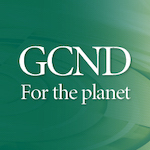Kidney health for everyone and everywhere: reflections to the female on the central theme of the World Kidney Day 2020
DOI:
https://doi.org/10.33393/gcnd.2020.2114Keywords:
Eating, Ethnic groups, Patient care, Primary prevention, Kidney failure, WomenAbstract
The goal of the World Kidney Day 2020 (WKD) is “the promotion of public health by ensuring universal, equitable and sustainable access to care, making access to health for all people and social categories equitable”. Chronic Kidney Disease (CKD) is a complex and “demanding” health problem for patients and professionals, particularly in the more advanced stages of the disease. In addition to factors such as the so-called systemic conditions and risk factors, sex-related factors intervene in women, which can further complicate the CKD trend. For these reasons, one of the objectives of the World Kidney Day is that prevention and early treatment are included in the Universal Health Coverage (UHC) and that common strategies are implemented to promote awareness of this pathology. The woman has always played a central role in the “coordination” of family life and “taking care”, a role transversal to the different ethnic groups, as evidenced also by the data relating to living kidney donation. This article gives a reflection on some issues related to prevention and treatment of CKD from a female perspective, such as what strategies to identify to implement prevention in the family starting from nutrition, such as the advice for the preparation of a diet plan respectful of the traditions of the country of origin, the identification and treatment of risk factors in order to implement strategies aimed at prevention dedicated to the female world and which style distinguishes the female approach to care | (Gender_nephrology)
Downloads
References
Provenzano M, Mancuso C, Garofalo C, De Nicola L, Andreucci M. Temporal variation of Chronic Kidney Disease’s epidemiology. G Ital Nefrol. 2019;36(2).pii:2019-vol2.
De Nicola L, Dal Canton A. Epidemiology of chronic kidney disease in Italy: the CARHES study. G Ital Cardiol. 2010;11 (5 Suppl. 3):106S-108S.
Documento di indirizzo per la Malattia Renale Cronica, Ministero della Salute, 2014 Novembre 5.
ISTAT. La Salute nelle Regioni Italiane – Bilancio di un decennio (2005-2015), 2019.
Piccoli GB, et al. Donne e Malattie renali: Riflessioni su WKD 2018. Giornale di Tecniche Nefrologiche e Dialitiche. 2018;30(1):7-11.
Artan AS, Kircelli F, Ok E, et al. Dialyzing women and men: does it matter? An observational study. Clin Kidney J. 2016;9(3):486-93.
Percorso Diagnostico Terapeutico Assistenziale per le persone con malattia renale cronica. Dir. Gen. Cura della Persona, Salute e Welfare. Determinazione n. 9509/2019, int. succ., Regione Emilia Romagna.
Centro di Ricerca Alimenti e Nutrizione del Consiglio per la ricerca in agricoltura e l’analisi dell’economia agraria. Linee Guida per una Sana Alimentazione Italiana. Revisione 2018. Eds. CREA, Roma 2019.
Kalantar-Zadeh K, Kramer HM, Fouque D. High-protein diet is bad for kidney health – Unleashing the taboo. Nephrol Dial Transplant. 2020;35(1):1-4.
National Kidney Foundation. K/DOQI clinical practice guidelines for chronic kidney disease: evaluation, classification, and stratification. Am J Kidney Dis. 2002;39:S1-266.
Zhang L, Wang F, Wang L, et al. Prevalence of chronic kidney disease in China: a cross-sectional survey. Lancet. 2012;379 (9818):815-22.
Süleymanlar G, Utaş C, Arinsoy T, et al. A population-based survey of Chronic Renal Disease In Turkey–the CREDIT study. Nephrol Dial Transplant. 2011;26(6):1862-71.
Cirillo M, Laurenzi M, Mancini M, Zanchetti A, Lombardi C, De Santo NG. Low glomerular filtration in the population: prevalence, associated disorders, and awareness. Kidney Int. 2006;70(4):800-6.
Murphy D, McCulloch CE, Lin F, et al. Trends in prevalence of chronic kidney disease in the United States. Ann Intern Med. 2016;165(7):473-81.
Glassock R, Delanaye P, El Nahas M. An age-calibrated classification of chronic kidney disease. JAMA. 2015;314(6):559-60.
Inker LA, Shafi T, Okparavero A, et al. Effects of race and sex on measured GFR: the multi-ethnic study of atherosclerosis. Am J Kidney Dis. 2016;68(5):743-51.
Iseki K, Iseki C, Ikemiya Y, Fukiyama K. Risk of developing end-stage renal disease in a cohort of mass screening. Kidney Int. 1996;49(3):800-5.
Halbesma N, Brantsma AH, Bakker SJ, et al. Gender differences in predictors of the decline of renal function in the general population. Kidney Int. 2008;74(4):505-12.
Seppi T, Prajczer S, Dörler MM, et al. Sex differences in renal proximal tubular cell zhomeostasis. J Am Soc Nephrol. 2016; 27(10):3051-62.
Grams ME, Chow EK, Segev DL, Coresh J. Lifetime incidence of CKD stages 3-5 in the United States. Am J Kidney Dis. 2013; 62(2):245-52.
Turin TC, Tonelli M, Manns BJ, et al. Lifetime risk of ESRD. J Am Soc Nephrol. 2012;23(9):1569-78.
van den Brand JAJG, Pippias M, Stel VS, et al. Lifetime risk of renal replacement therapy in Europe: a population-based study using data from the ERA-EDTA Registry. Nephrol Dial Transplant. 2017;32(2):348-55.
De Nicola L, Donfrancesco C, Minutolo R, et al. Prevalence and cardiovascular risk profile of chronic kidney disease in Italy: results of the 2008-12 National Health Examination Survey. Nephrol Dial Transplant. 2015;30(5):806-14.
Gyamlani G, Geraci SA. Kidney disease in pregnancy: (Women’s Health Series). South Med J. 2013;106(9):519-25.
Levin A, Tonelli M, Bonventre J, et al. Global kidney health 2017 and beyond: a roadmap for closing gaps in care, research, and policy. Lancet. 2017;390(10105):1888-917.
Afshin A, Forouzanfar MH, Reitsma MB, et al. Health effects of overweight and obesity in 195 countries over 25 years. N Engl J Med. 2017;377(1):13-27.
O’Shaughnessy MM, Hogan SL, Thompson BD, et al. Glomerular disease frequencies by race, sex and region: results from the international kidney biopsy survey. Nephrol Dial Transplant. 2018;33(4):661-9. [Epub ahead of print]
ISTAT. Annuario Statistico Italiano 2019.
American Dietetic Association. Medical Nutrition Therapy: Chronic Kidney disease (non-dialysis). Chicago (CD-ROM). 2002.
Morana PP, Giannini R, Carboni E, Ghidoni M, Fantuzzi AL. La relazione terapeutica con il paziente migrante e la “cultural competence” del dietista: un contributo esperienziale. G It Diabetol Metab. 2017;37:17-22.
Fantuzzi AL, Bedogni G. Dieta ipoproteica e insufficienza renale cronica. Milano, UTET. 2001.
Downloads
Published
How to Cite
License
Copyright (c) 2020 The authors

This work is licensed under a Creative Commons Attribution-NonCommercial 4.0 International License.
Authors contributing to Giornale di Clinica Nefrologica e Dialisi (GCND) agree to publish their articles under the CC-BY-NC 4.0 license, which allows third parties to re-use the work without permission as long as the work is properly referenced and the use is non-commercial.
Accepted 2020-04-08
Published 2020-05-18











